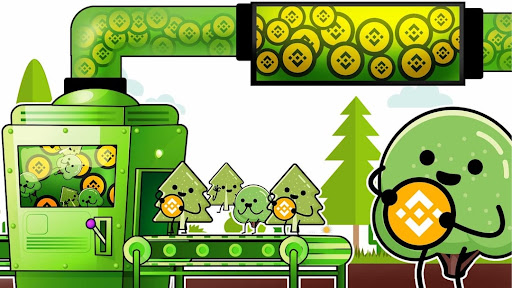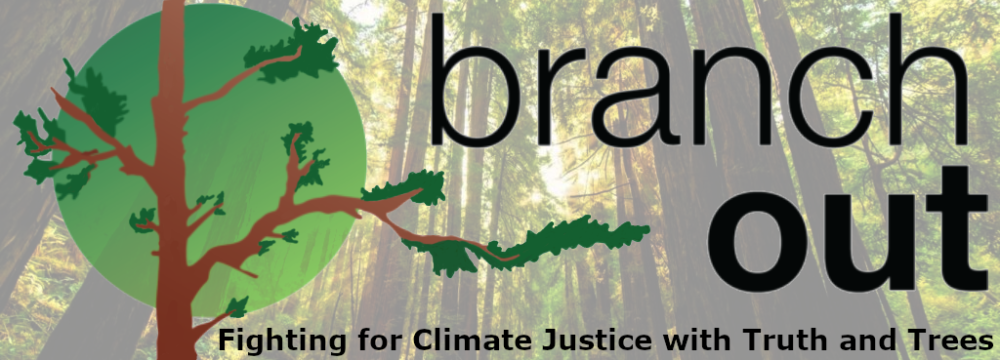Bitcoin has given the world of crypto, sustainability-wise, a rather bad name. After all, the daily wattage of this particular blockchain surpasses that of Google and a few industrial nations, combined. The cryptographic “mining” of this mintage, while digital in process, is by that very token (pun intended), a function of electricity. In just the last month, Bitcoin’s energy demands have determined — and been determined by — political events in the backcountries of Kazakhstan (oil) as well as West Virginia (coal). Let us drop the quotes then: mining for Bitcoin is no metaphor.
Money itself, on the flip side, is — per the media ecologist Marshall McLuhan:
“‘Money talks’ because money is a metaphor, a transfer, and a bridge. Like words and language, money is a storehouse of communally achieved work, skill and experience . . . As a vast social metaphor, bridge, or translator, money—like writing—speeds up exchange and tightens the bond of interdependence in any community . . . From coin to paper currency, and from currency to credit card, there is a steady progression toward commercial exchange as the movement of information itself.” (Understanding Media 1964)
This begs the question: if money talks, and the medium is the message, then how do we cut through the cacophony of currencies to discover what blockchains can say?
For one, challenges to the carbon footprint of Bitcoin can be as vocal within crypto spaces as without. Most predominant here are Proof-of-Stake auditing schemes that, against Bitcoin’s Proof-of-Work, signify an astronomical reduction in energy costs. While such changes are cause for celebration, improvements in this area tend to place the focus on using less carbon. Accordingly, discussions of “greening crypto” (as codified by Broadcast news) have revolved around the important but limited problem of reducing carbon emissions, i.e. “harm reduction.”
 In the past year, however, a handful of new projects have cropped up under the carbon-negative rubric of regenerative finance (ReFi) designed to have a positive impact on the planet by sequestering carbon, cleaning up pollution, and facilitating ecosystem restoration. These protocols take on the task—equal parts difficult and necessary—of exploring a collective destination beyond the horizon of petrodollar hegemony.
In the past year, however, a handful of new projects have cropped up under the carbon-negative rubric of regenerative finance (ReFi) designed to have a positive impact on the planet by sequestering carbon, cleaning up pollution, and facilitating ecosystem restoration. These protocols take on the task—equal parts difficult and necessary—of exploring a collective destination beyond the horizon of petrodollar hegemony.
Drawing on some of the entries from a long list of ReFi projects, we offer an analysis of the three nested functions that every addition to this dark-green web strives to interweave: accreditation, appreciation, and participation. Though naturally, no one mint will work as a silver bullet, much less turn lead to gold, together these accounts aspire to align economical values with ecological values in their energetic reckonings of a single bottom line.
ACCREDITATION
A fundamental way that cryptocurrency projects can generate and/or recognize ecosystemic value is through accreditation. By minting certain environmental credits as cryptographic tokens, they can both increase the currency of these credits as stores of value and crowdfund stewardship in their relevant domains.
#1 SolarCoin ($SLR)

The earliest case may be SolarCoin, established in 2017, which attributes a new token for every 1kWH of solar power accredited. The coin’s primary goal is to accelerate the implementation of solar energy systems by ensuring a baseline cash flow and, given sufficient appreciation of the token, fully subsidizing this form of power generation.
Looking beyond cryptocurrencies to novel uses of blockchain, a lively academic discussion has opened up around peer-to-peer coordination of renewable microgrids. Wired in parallel with genuinely green coins, a smart/social meter would read out a just transition to renewables by financing their adoption, bolstering the climate resilience of the electricity supply, and moving power itself from corporate to community control.
~~~~~~~
Similarly, many ReFi projects can enable smaller investors and stewards to generate, trade, and/or retire carbon credits. Notwithstanding the fact that corporate polluters will inevitably seek to use this asset class for greenwashing, the generation of credits may create an opening for siphoning funds away from the petrodollar.
Already, the tokenization of carbon credits has facilitated a popular (non-corporate/non-state) investment in sequestration and emissions reductions. Practically any individual or community with internet access can now purchase credits to either offset their carbon footprint or derive income from rising demand for them. Hardly restricted to ‘Net Zero by 2050’ or any other catastrophically inadequate targets, these exchanges are the writing on the wall to become Net Negative, Today, by investing in new economies of climate-friendly cryptocurrency.
#2 TreeDefi ($SEED / $TREE)

One of the first crypto projects in this capacity was TreeDefi, which offers a few tokens in addition to NFTrees (non-fungible trees). These confer a title to investments in real trees, which are verified to be “farming carbon” through TreeDefi’s stewardship partners. In return for investing in tree planting and care, NFT holders are rewarded with TreeDefi’s tokenized carbon credits to redeem and/or retire.
#3 Moss ($MCO2)

By contrast, Moss focuses on accrediting the protection of trees that already exist—in this case, the Amazon rainforest. Already, their MCO2 token has raised millions (in USD) for projects like Madre de Dios which claims to financially support the Boca Pariamanu Native community, who have long called the forest home. If tokenization can truly support Indigenous land claims, it will help fight the collapse of a crucial planetary system and sanctum sanctorum of biodiversity.
#4 Toucan Protocol ($BCT / $NCT)

The biggest crypto project working directly in carbon accreditation today is the Toucan Protocol. Toucan’s Base Carbon Ton (BCT), forged by bridging off-chain credits, currently accounts for about 85% of all on-chain carbon credits. Toucan challenges the notion that BCT—along with its brand-new Nature Carbon Ton (NCT)—should exist merely to offset negative externalities (that is, carbon emissions).

Accordingly, the protocol seeks “to generate new, positive externalities” (that is, carbon remissions) by embedding “regenerative and planet-positive measures into the very fabric of our economic interactions.” One has to take a look ‘under the hood,’ of course, to make sure the credits themselves represent real action. If these tokens prove to be effective in real-world carbon farming and conservation projects, then the tokenization of carbon can become a powerful engine of planetary regeneration.
APPRECIATION
 Currently, a ton of unpolluted CO2 is typically priced in the range of $5-10 on voluntary credit markets, while a ton of carbon ready to burn in the form of petroleum is worth over $500. In other words, fossil fuels—the foremost accelerator of climate collapse and the ongoing sixth mass extinction—are reckoned as about a hundred times more valuable than sequestered carbon, their corresponding remission. To remedy this imbalance, a higher-order function of blockchains is emerging to disrupt this market and establish the worthiness of living carbon.
Currently, a ton of unpolluted CO2 is typically priced in the range of $5-10 on voluntary credit markets, while a ton of carbon ready to burn in the form of petroleum is worth over $500. In other words, fossil fuels—the foremost accelerator of climate collapse and the ongoing sixth mass extinction—are reckoned as about a hundred times more valuable than sequestered carbon, their corresponding remission. To remedy this imbalance, a higher-order function of blockchains is emerging to disrupt this market and establish the worthiness of living carbon.
#5 Klima DAO ($KLIMA)

In October of 2021, the same day Toucan’s carbon credits went live, the protocol’s partner Klima DAO—”Decentralized Autonomous Organization” or crypto’s answer to the Joint Stock Company—launched in tandem. Klima buyers have the option of depositing a carbon credit (such as BCT or MCO2) to the treasury in exchange for a discount on its mintage. This bonding mechanism purports to invert the petrodollar formula, instituting a currency backed by carbon in emissions avoided or removed rather than as fuel intended to pollute, which would make the repair of our climate the basis of its exchange value.
By giving purchase to carbon markets while withholding their supply side, Klima’s goal is to:
1. Pressure corporations to pollute less by raising the prices of all offsets
2. Corner polluters into paying more if/when they do try to buy any credits
3. Appreciate the “real wages” collected by accreditable carbon removers
The hype surrounding Klima’s much-publicized launch may have briefly succeeded in driving up the price of carbon credits, which doubled on the voluntary markets the month of its debut. In the process, it has locked millions of credits into its treasury, which it values at 15 million tons of CO2.
The proven ability of crypto projects such as Klima to quickly amass and manage wealth illustrates a catalytic effect appropriate to the urgency of climate collapse. If ecologically sound and accomplished at scale, such a model would enable a kind of decentralized autonomous ‘regulation’ of carbon markets, dictating a message—via social action—in the language business understands best: money.
#6 Diatom ($DIAT / $PRC)

Diatom DAO has launched on a parallel trajectory, trading in the protection of our oceans with an initial focus on fishing plastic out of waterways. In the last few months, Diatom raised a fat stack of coin to this end, while its primary token (DIAT) launched this week. Shortly hereafter, the Plastic Removal Credit (PRC) is planned for minting, with tokens generated for every ton of plastic removed—to be authenticated by its partner CleanHub. CleanHub both verifies the removal of plastic and directs funds to local communities for clean-up projects.
But the mission of Diatom DAO goes beyond that of its initial project. As an investment strategy, it includes an interest in biodegradable styrofoam, sustainable aquaculture, and offshore renewable energy. And when it comes to PRCs, Diatom has plans for infrastructure to undertake more complex plastic removal projects as well as new standards for waste reduction organizations must pass to use credits as offsets, showing how the DAO would take active steps to keep PRCs from turning into a “license to pollute” for plastic waste. Instead, it is by design a financial instrument whose value becomes appreciable through waste removal technologies and techniques, enforceable offsetting standards, and affordable alternatives to petroleum plastics.
#7 Regen Network ($REGEN)

Regen Network’s vision combines regenerative land stewardship and a new, diverse suite of tokenized eco-credits to realize value for both farmers and the planet. For many rural communities, the premise holds promise as an alternative to dependency on big agribusiness. Provisioning of ecosystem services might thus “surpass commercial agriculture and livestock as the dominant mode of agricultural income”—if the Regen Network can help take it there.
Regen currently offers carbonplus grassland credits for regenerative rangeland management, with future credits planned to compensate land stewards for ecological best practices such as no-till, cover cropping, crop rotation, rotational grazing, or agroforestry; and for observable outcomes including improving soil organic carbon, above-ground biomass, and soil health.
To realize these goals, Regen has created its own blockchain as an immutable ledger of ecological health. This open-source accounting will link in turn to a virtual marketplace, completing the circuit of a regenerative enterprise ecosystem.
Ultimately, the success of this approach depends upon decentralized and low-cost verification technologies/techniques, which would at long last enable small farmers to reap the rewards of carbon credits. Currently, in the U.S. for example, the prohibitive cost of accreditation by large bodies (e.g. Verra) prevents landholders who manage less than 1000+ acres of forest from collecting payment on the value of potential carbon credits. In the textile of its transactions, then, the Regen Network invites its peers to weave creative methods for verification into a consensual and participatory work ethos.
To unlock the full potential of climate-friendly crypto requires far more than simply overcoming an economy of scale; it implies entirely new media to articulate the planet’s collective interests. In part two of The Dark Green Web, we plan to delve deeper into ways that crypto has already enabled greater participation in climate action and ecosystem restoration, with special attention to the DAO as a building block of Web3.
~~~~~
Disclaimer: This article is not financial advice and did not cover a wide range of other factors which might inform your decision to invest or not invest in any of the discussed projects. Please do your own research prior to investing.
One of the contributors to this article held $DIAT and $REGEN (at the time of publication).



